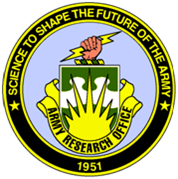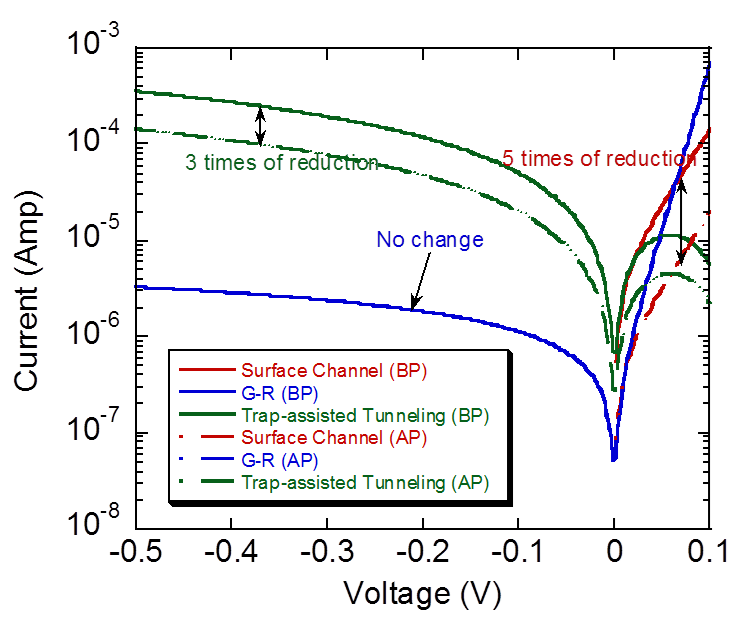

 |
 |
|---|
| Links: Task 1: Theoretical & Experimental Study of Defects Task 2: Innovative Growth and Fabrication Processes for Defect Reduction Task 3: Evaluation of Defect Reduction Approaches and Device Applications Kickoff Documents (Restricted) 2011 Annual Review (Restricted) |
Task 3: Evaluation of Defect Reduction Approaches and Device ApplicationsTask Leader: Yong Zhang (UNCC)By exploring methods (see Tasks 1 and 2) to reduce defects, we will be able to produce practical T2SL lasers and detectors incorporating these approaches. A necessary step is to then evaluate the performance of the defect reduction methods to identify those that show the most promising improvements. This task focuss on a comprehensive study of the effects of defect reduction methods. The work will consist of:
 I-V characteristic curves of a device before (BP) and after (AP) surface passivation. Direct comparison shows that surface channel and trap-assisted tunneling current, which dominate dark current, are significantly reduced. S Mou, J. Li, and S. L. Chuang,
JAP 102, 066103(2007). |